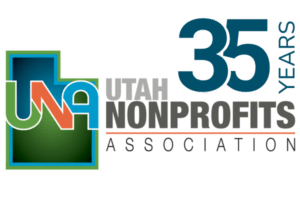Federal funding cuts are hitting nonprofits across the country. Programs are being scaled back, timelines extended, and once-reliable funding streams are suddenly uncertain.
But while this environment can feel discouraging, it's not the time to step back from seeking grants. In fact, now is the time to double down on non-federal funding.
Private foundations, corporate giving programs, community foundations, and donor-advised funds all offer critical opportunities—especially during periods of federal instability.
Here’s why pursuing non-federal grants is not only practical, but essential for nonprofit resilience and growth.
- Diversified Funding Means Greater Stability
Relying heavily on one type of funding—particularly federal—can leave an organization vulnerable. When that funding is delayed, reduced, or eliminated, the fallout can be swift. Pursuing non-federal grants helps diversify income sources, creating a more balanced and stable financial foundation. This kind of diversity helps nonprofits navigate budget shortfalls and avoid program disruption. - Faster Response Times and Greater Flexibility
Federal grants often involve long application cycles, extensive compliance requirements, and delayed disbursements. Many non-federal funders operate on shorter timelines and can be more nimble than their government counterparts. This speed can be critical for nonprofits trying to bridge sudden funding gaps or respond to urgent community needs. Non-federal funders also tend to offer greater flexibility in how dollars are spent—especially when compared to tightly restricted federal awards. Whether it’s program costs, staff time, or general operations, many private grants come with fewer strings attached. - Mission Fit and Innovation Are Often Encouraged
Private funders are more likely to support projects that are aligned with their specific missions—and that often includes experimental or innovative ideas. Where federal funding may prioritize proven models and strict program parameters, non-federal grants are more likely to embrace creative approaches and unique community solutions. This is especially important in a changing world, where nimble responses and fresh thinking are required to tackle new challenges. - Community Connections Are Strengthened
Local and regional foundations often prioritize impact in their immediate communities. By applying for and securing support from these sources, nonprofits can deepen their roots and raise their visibility in the regions they serve. This can lead to long-term partnerships, increased local donations, and stronger community alliances. These relationships also allow funders to see the impact of their investments firsthand, which can lead to renewed or increased support in the future. - Philanthropy Is Stepping Up
As federal dollars shrink, many private funders are stepping in. Several foundations and corporate partners have launched rapid-response funds, gap grants, or capacity-building initiatives specifically designed to support nonprofits facing government cuts. Funders are aware of the challenges nonprofits are experiencing—and they want to help. Many are eager to make a difference where public support is falling short. - Capacity Building Opportunities Abound
Non-federal grants often cover areas that federal funding doesn’t touch—such as strategic planning, fundraising infrastructure, technology upgrades, and staff training. These areas may not directly fund programming, but they’re essential for long-term effectiveness and sustainability. Investing in your organization’s internal capacity makes it easier to weather future disruptions—and to deliver greater impact. - Stronger Relationships, Not Just Transactions
Federal grants often feel transactional: you apply, you report, you repeat. Non-federal grants, by contrast, are frequently relationship-based. Funders want to get to know you, your team, and your story. They’re often more engaged with your mission and more open to dialogue and collaboration. These relationships can grow over time into multi-year support, strategic partnerships, or even co-designed initiatives. That kind of long-term trust is a rare and valuable asset.
Final Thoughts: Don't Retreat—Recalibrate
The current funding environment is undoubtedly challenging. But it’s also an opportunity for nonprofits to rethink, realign, and refocus their funding strategies. Non-federal grants are not just a backup—they’re a strategic avenue for growth, resilience, and innovation. Rather than pausing your grant-seeking efforts, consider this a chance to expand them. Strengthen relationships with local funders, sharpen your case for support, and explore funders who align with your evolving needs. Federal cuts may be beyond your control—but your funding strategy isn’t.
About the Author
Laura Chynoweth, Founder & CEO of Granted Fundraising Consultants
Shaped by experience gained in previous development roles at Girl Scouts of Utah, Utah Film Center, and Sundance Institute, Laura founded Granted Fundraising Consultants in 2014. Passionate about disrupting inequitable grantmaking practices, she continually leads her team in the development of programs to address them. Laura has color grapheme synesthesia, informing Granted’s policy on providing working drafts to clients in blue font. Striving to stay ahead of ever-evolving guidelines in the fundraising field, she has held her CFRE certification since 2019 and her GPC since 2024. She currently serves on the board of trustees for Creative West and enjoys acting as a regular grant reviewer for National Endowment for the Arts, Utah Division of Arts and Museums, and the Utah State Library Division. Laura has never turned down a soft pretzel and loves to play outside with her husband and dog.
